Best B2B Content Marketing Strategy Examples to Take Inspiration From

Content has become a powerful tool for many B2B companies in the marketing mix. Almost all top-performing marketers (nine out of ten) use the best B2B content marketing strategies to attract new customers. In 2019, the most successful marketers already spent 40% or more of their overall marketing expenditure on their content strategy.
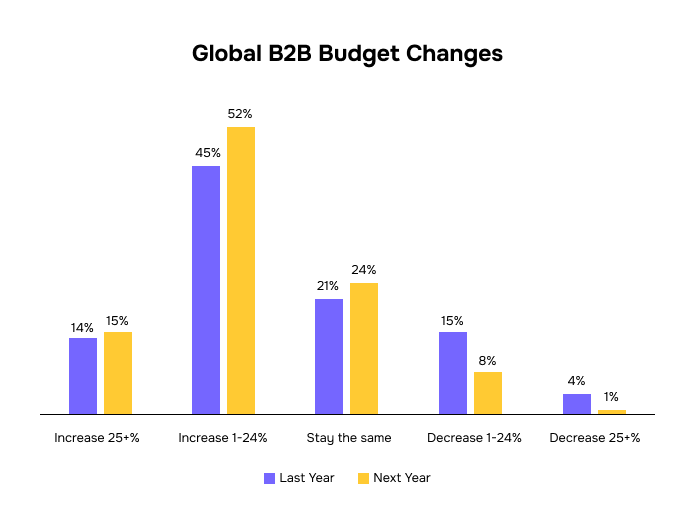
Additionally, with as many as 80% of B2B organizations using content marketing strategies to accomplish their business objectives and almost 50% of marketers anticipating budget increases next year, the content marketing industry is becoming more crowded than ever.
However, despite its potential for building strong brands and businesses, many companies find their content campaigns fall short. These poorly executed campaigns not only waste time and money but can also damage the way your customers see your brand.
Mark Schaefer, a globally acclaimed author, keynote speaker, and marketing consultant, says:
“The real power comes to those who can create content that connects, engages, and spreads through the network.”
So, why aren’t more marketers achieving the content marketing ROI they aim for? Let’s get started with content marketing before diving deep into the best B2B content strategies.
At its core, B2B content marketing is about using stories, ideas, and insights to engage and attract a target audience. The best content marketers grab the attention of audiences tired of traditional product-focused or pushy sales tactics by telling compelling stories.
These high-quality content marketing campaigns support their stories and ideas with solid insights: intriguing data points, original research, and real-world examples that help customers understand a new trend or challenge. This equips them with the tools and best practices to respond and thrive.
The Evolution of B2B Content Marketing
Over the years, B2B purchases have evolved dramatically from commercial marketing strategies. Nowadays, the majority of the buying process happens online, rendering the traditional marketing process not only outdated but nearly obsolete.
According to research by Gartner involving 750 B2B customer stakeholders involved in making complex solutions purchases in their companies during the pre-pandemic era, customers said they only spent about 17% of their time talking directly to the salespeople from the companies they were buying from.
Instead, they spent a considerable amount of time conducting research on their purchase independently through online (27%) and offline (18%) mediums. They also reported spending time getting internal stakeholders in their organization and partner companies to agree on the purchase (22% and 11%, respectively).
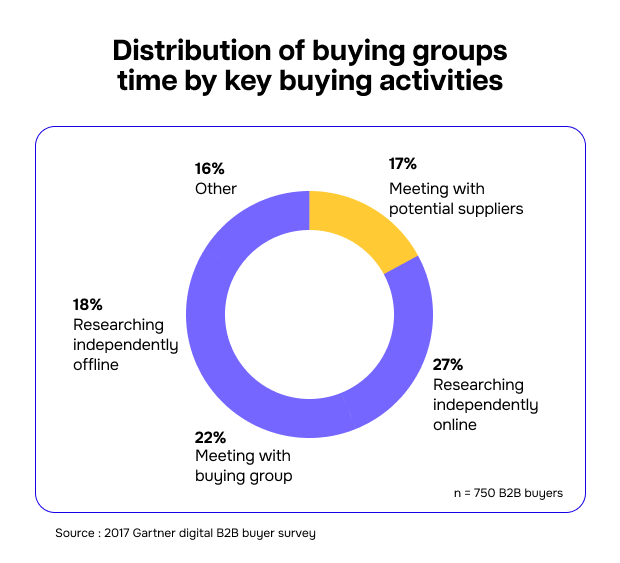
For many sales leaders, this small amount of time talking directly with customers is a big challenge their team faces today. They lack the opportunity and access to influence the customer’s decision or get them to prefer their company’s product.
As one sales leader said, “We have very few ‘at bats’ to actually influence customer buying behavior.” In simpler terms, the way businesses buy things these days doesn’t leave much room for sales teams to do their job.
So, what do buyers do? Today’s B2B customers depend heavily on digital information to track progress across their overall purchase journey. They turn to online resources like company websites, social media, and review platforms to gather information and assess their options. This shift in behavior highlights the importance of a solid online presence and effective content marketing strategies for B2B companies. Let’s take a look at some successful examples.
Best B2B Content Marketing Strategy Examples
A study by the Content Marketing Institute revealed that the most popular content types leveraged in the last 12 months are short posts/articles, videos, and case studies/consumer stories.
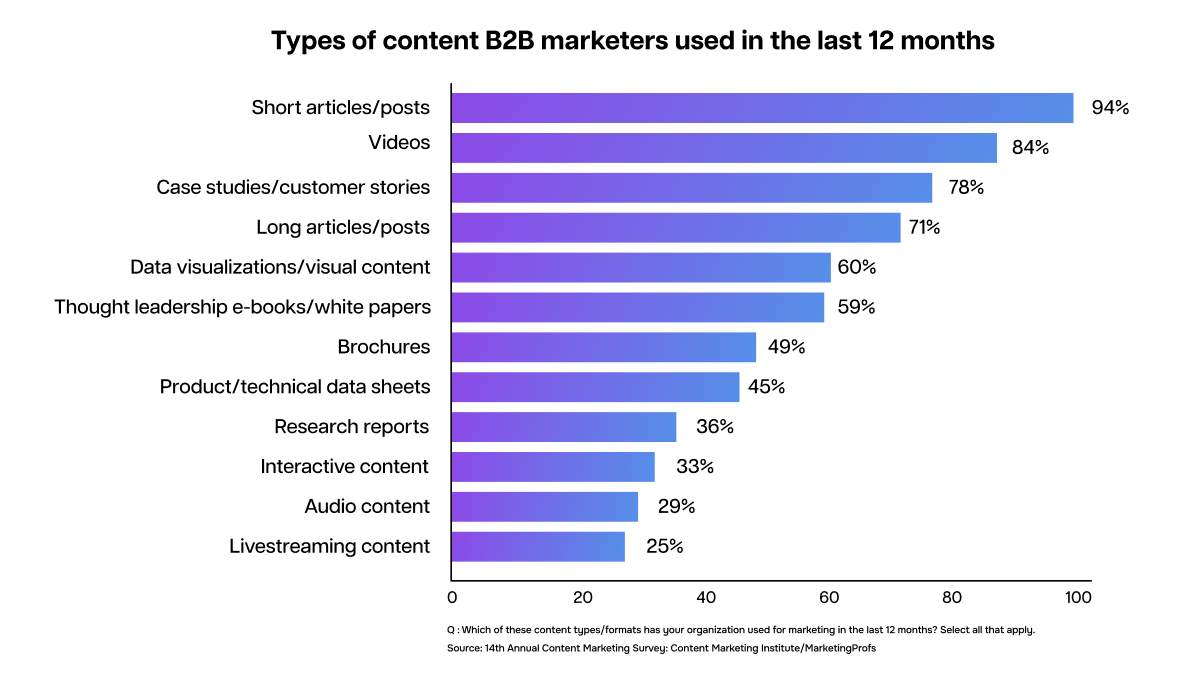
Below are some of the best B2B content marketing strategy examples to take inspiration from for your next campaign:
1. Thought Leadership via Whitepapers and E-books
Sharing thought leadership content is one of the best content strategies for B2B businesses. In fact, about 60% of business decision-makers say it’s a big factor in choosing a supplier.
Animalz is really good at creating highly targeted, in-depth content for SaaS marketers. They might create data-driven, long-form analytical pieces or insightful articles like the one about the Content Value Curve.
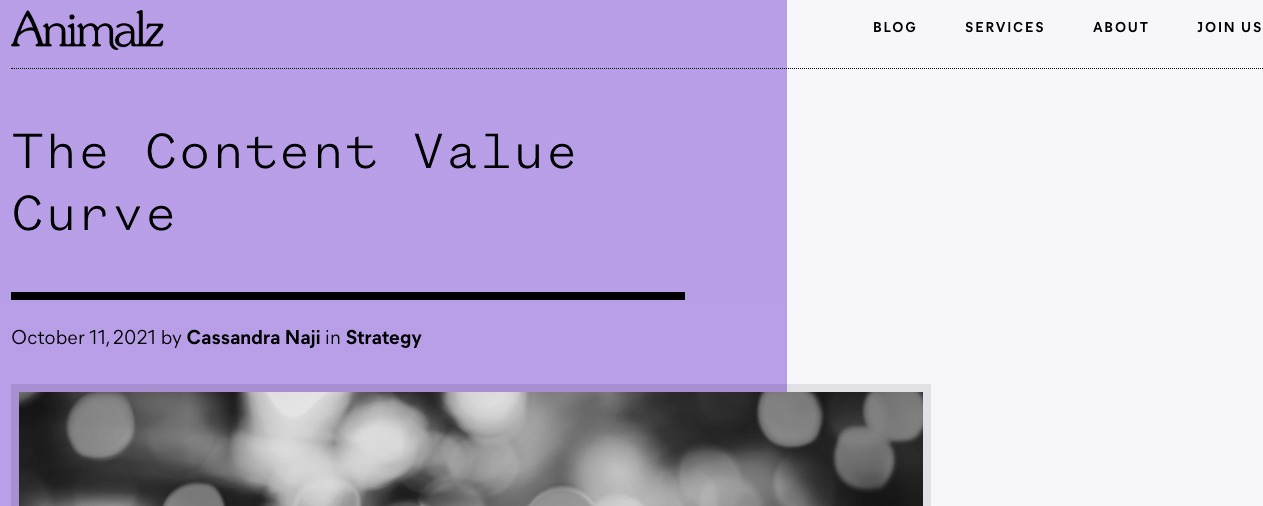
When you share this kind of content, it helps build trust and shows that your brand knows its objectives. It also sets your brand apart by sharing its own unique viewpoint, making your position in the market even stronger.
2. Webinars and Virtual Events
In today’s digital age, connecting with audiences in meaningful ways has become essential for businesses, and webinars and virtual events have emerged as powerful tools for engagement and lead generation. Let’s take a closer look at how Atlassian, a prominent software company, effectively leverages webinars to bridge the gap in the digital landscape.
Atlassian recognized the need to engage with their audience on a deeper level. They understood that simply providing a product wasn’t enough; they needed to offer value beyond their software solutions. Webinars provided the perfect platform to achieve this. By hosting interactive online sessions, Atlassian could directly communicate with their customers, addressing their pain points and offering practical solutions.
Atlassian’s webinar series on Agile transformation is a prime example of their successful engagement strategy. Through this series, Atlassian provided practical insights on how businesses can adopt agile methodologies for improved project management. By sharing real-world examples and case studies, they demonstrated their expertise in a relatable and accessible manner.

Moreover, they were able to capture leads from a pool of genuinely interested prospects. These leads, having engaged with Atlassian’s content, were more likely to convert into loyal customers. Hence, by prioritizing audience engagement and utilizing webinars for lead generation, they have successfully bridged the gap between their brand and their customers.
3. Podcasts and Audio Content for B2B Engagement
Podcasts and audio content are dynamic channels for reaching and resonating with specific audiences. A study by Podcast Insights suggests that 75% of Americans are now familiar with it, and nearly 55% listen to podcasts regularly. Additionally, a 2022 Hubspot survey found that approx. 82% of B2B marketers prefer podcasts and invest in producing audio content.
Dave Gerhardt’s podcast series, Exit Five, exemplifies the power of niche targeting through audio. With a focus on marketing for B2B SaaS companies, Exit Five caters to a highly specific audience, delivering content tailored to their unique needs and interests.
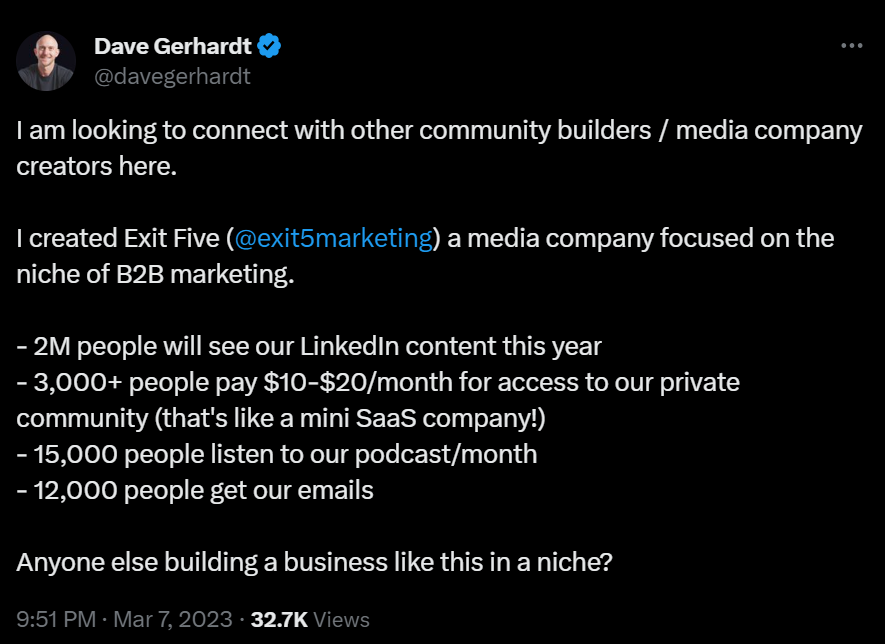
The success of Exit Five is evident in the metrics and outcomes achieved through this audio content strategy. The podcast has garnered a substantial following, with a consistent listenership from professionals in the B2B SaaS space. The engagement levels, including downloads, shares, and listener feedback, provide concrete evidence of the podcast’s impact and relevance.
Engagement Metrics:
- Average Monthly Listeners: 15,000+
- Subscriber Growth Rate: 20% MoM (Month over Month)
- Listener Retention Rate: 75%+
Exit Five’s success extends beyond audience engagement. The podcast’s targeted content and engaged audience make it an attractive platform for sponsorship opportunities. By aligning with relevant B2B SaaS brands, Exit Five has generated substantial revenue through sponsorships, further solidifying its position as a valuable asset within the B2B marketing community.
4. Personalized Email Marketing Campaigns
Personalized email marketing campaigns have transformed the way businesses interact with their audience. Mailchimp, a leading marketing automation platform, is one of the best examples of how customized content can impact engagement and conversion rates.
One standout email marketing feature of Mailchimp is its Dynamic Content, which enables marketers to create emails using drag-and-drop content blocks to personalize messages based on the recipient’s preferences or behaviors.
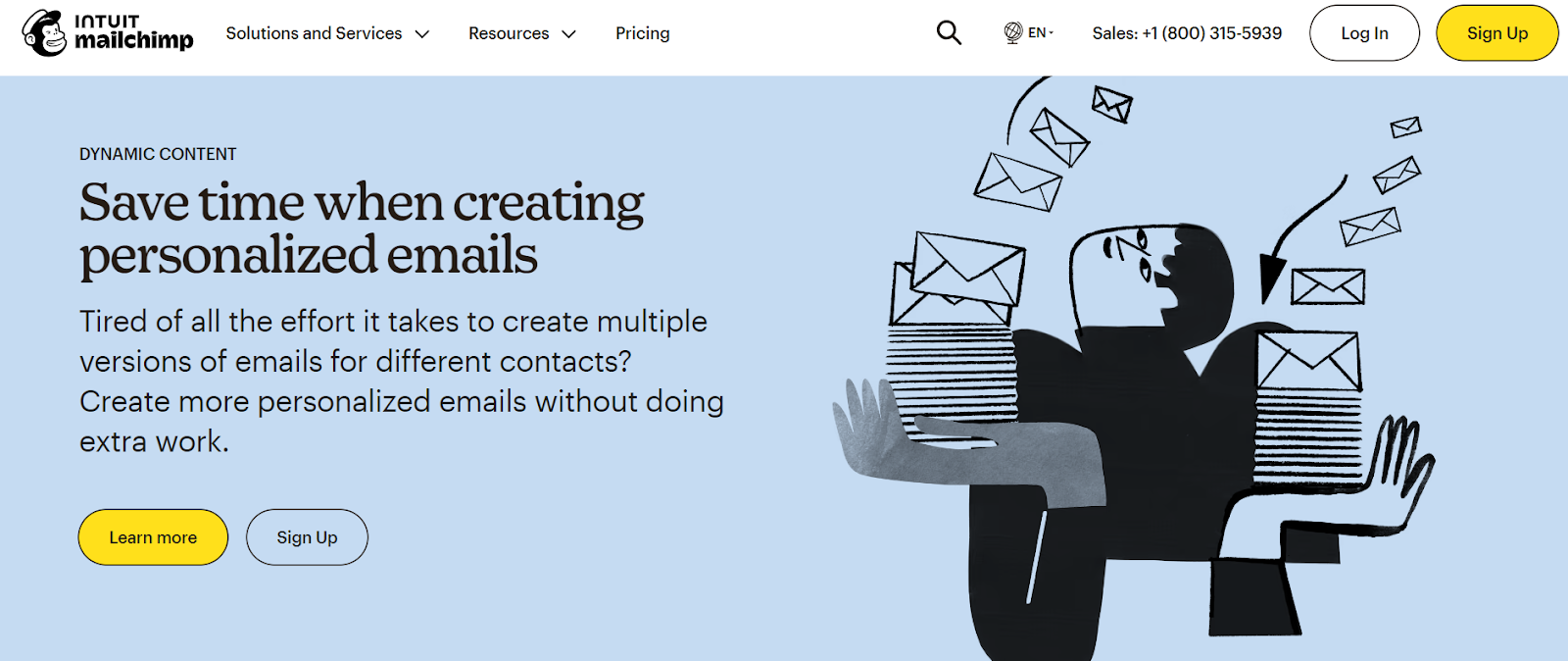
For example, a retailer can send an email highlighting multiple product recommendations to various segments of its audience. This level of personalization makes sure each recipient receives email content relevant to their specific interests and preferences.
This shows that when people receive emails that resonate with their needs, they are more likely to engage and take the required actions, resulting in higher conversion rates.
5. Engaging Infographics and Visual Content
Infographics and visual content have become indispensable tools for businesses looking to engage their audience effectively.
The impact of engaging infographics on audience retention and sharing is significant. Studies have shown that visual content is processed 60,000 times faster than text, making it a highly effective tool for capturing and retaining audience attention.
Pepper Content stands out as a prime example of how data visualization can be leveraged for impactful B2B engagement. Its data-backed infographics not only captivate its audience but also encourage social sharing, extending the reach of the content and increasing brand visibility.
Pepper Content’s use of infographics spans across various platforms, showcasing their versatility and effectiveness. On their blog page, infographics serve as visual supplements to their written content, providing readers with a comprehensive and engaging learning experience.
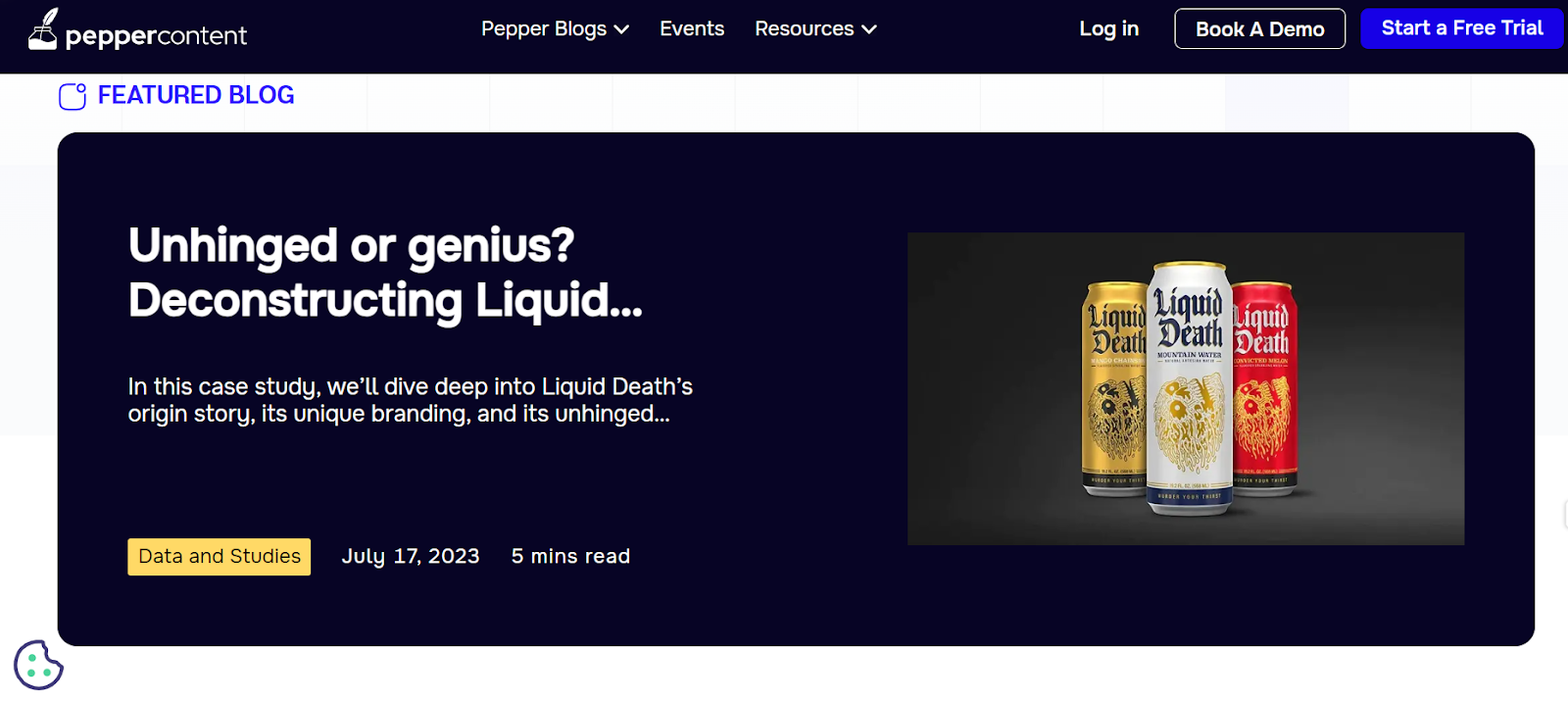
Additionally, on LinkedIn, Pepper Content utilizes infographics to communicate thought leadership and industry expertise, positioning itself as a trusted resource within the B2B community.
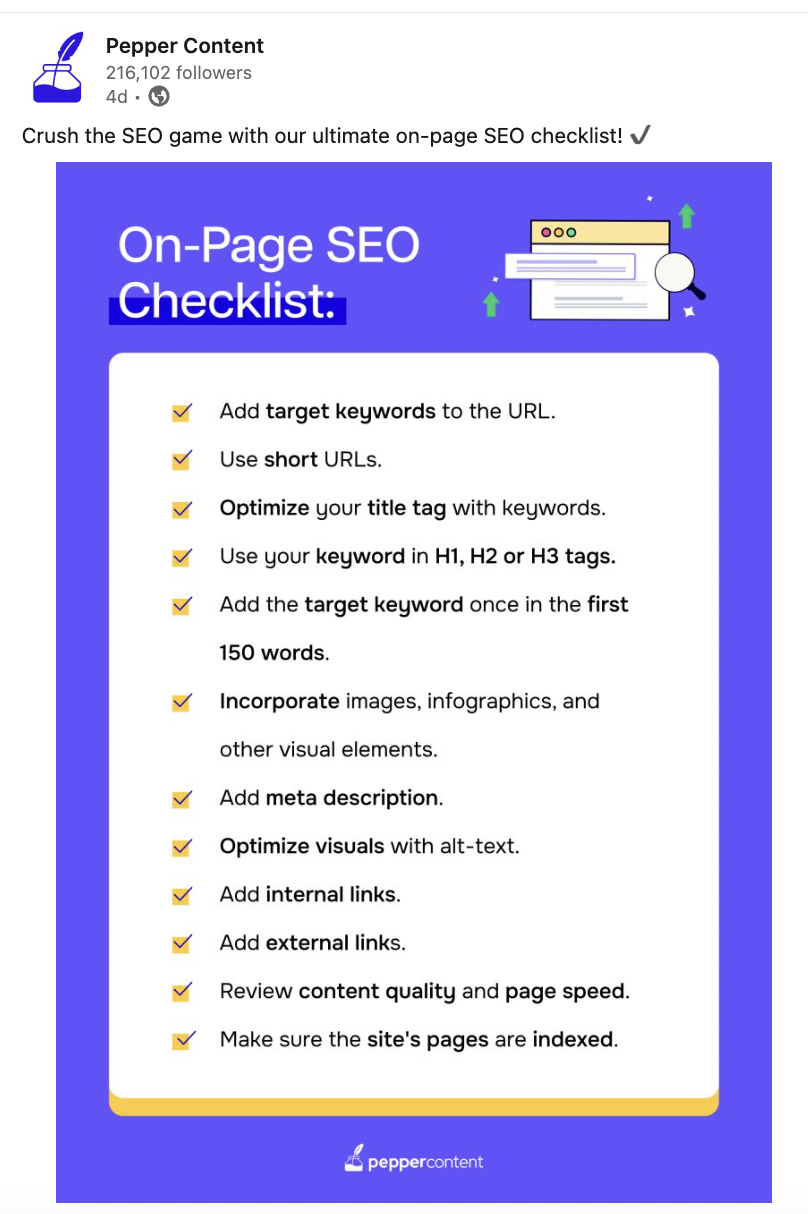
6. Interactive Tools and Calculators
Interactive tools and calculators have emerged as dynamic means of engaging with audiences in the digital landscape.
HubSpot’s Website Grader is a standout example of how these tools can deliver tangible value to users. It is a free online tool that evaluates the effectiveness of a website based on key performance metrics like mobile responsiveness, SEO, security, and performance speed.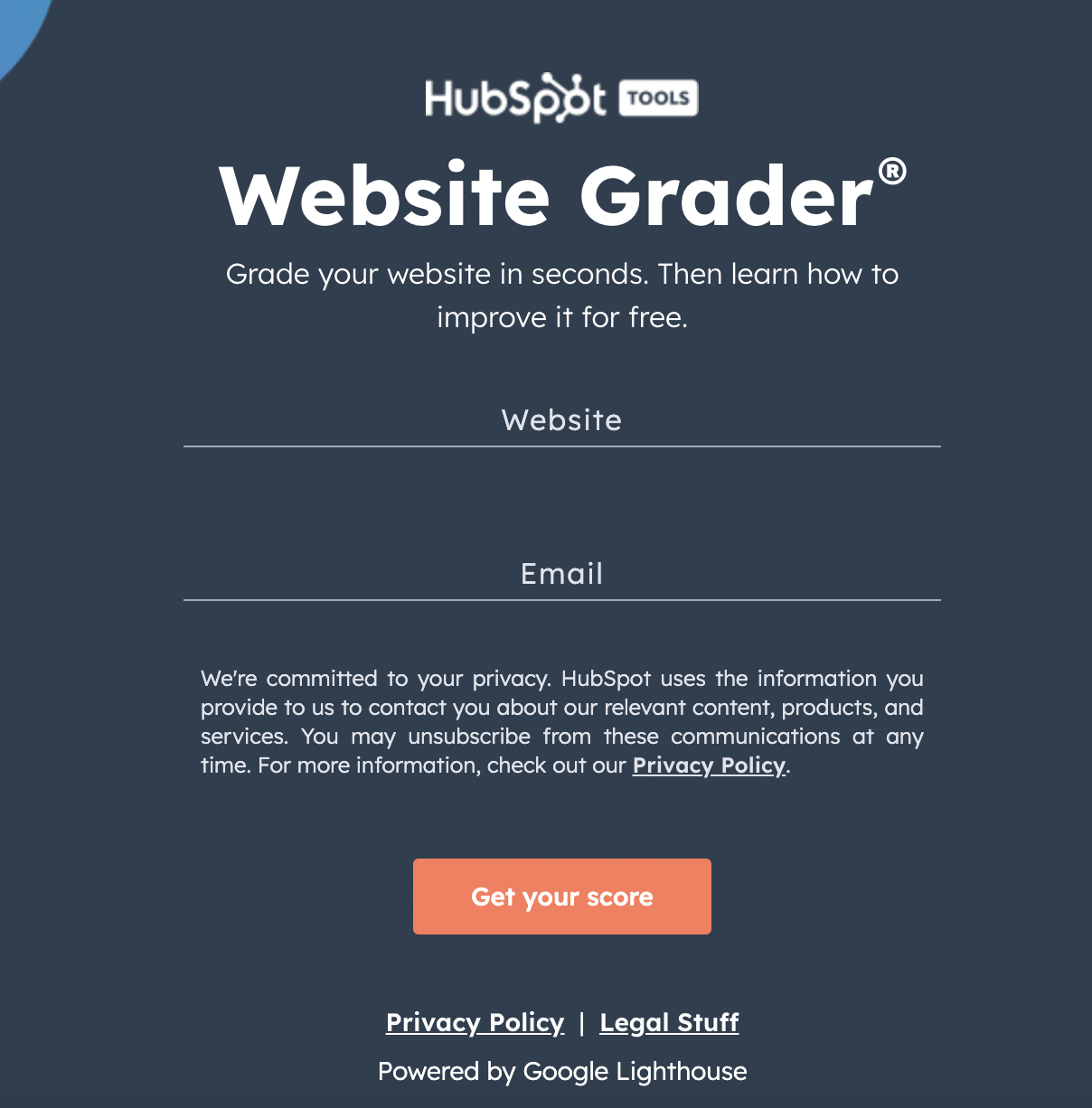
Users input their website URL, and the tool generates a comprehensive report with actionable insights and recommendations for improvement. This interactive experience empowers users with specific, data-driven insights to enhance their online presence.
The impact of HubSpot’s Website Grader is reflected in both the metrics and the takeaways for users:
- Over 1 million websites graded since 2008.
- High user interaction with an average time of over 5 minutes per session.
- Positive feedback and testimonials from users highlight the tool’s value in optimizing their websites.
User Takeaways:
- Actionable Insights: Website Grader provides users with a clear roadmap for improving their website’s performance, helping them address critical areas for enhancement.
- Increased Digital Competency: Users gain a better understanding of key website metrics and factors that contribute to their online success.
- Enhanced User Experience: By identifying and rectifying issues, users create a better experience for their own website visitors.
Key Elements that Made These Strategies Successful
Let’s explore the fundamental elements that have driven these strategies to success:
1. Consistent and High-Quality Content
Consistency in delivering high-quality content forms the cornerstone of any effective marketing strategy.
Whether through blogs, videos, or social media posts, maintaining a steady stream of valuable and relevant content fosters trust and reliability among the target audience. This foundation establishes a strong brand presence and keeps the audience engaged over time.

2. Understanding and Targeting the Audience
You need to have an in-depth knowledge of the target audience for crafting impactful marketing strategies.
Successful campaigns are built on a profound understanding of the audience’s preferences, pain points, and behaviors. By tailoring content and messaging to resonate with the specific needs of the audience, B2B marketers create a connection that goes beyond generic communication.
3. Leveraging Analytics and Feedback
Data-driven decision-making is a critical element in the success of B2B content marketing strategies.
Leveraging analytics tools such as Google Analytics and Google Search Console to track key performance indicators (KPIs) allows marketers to measure the effectiveness of their efforts and make informed adjustments.
Additionally, actively seeking and incorporating feedback from the audience ensures that strategies remain relevant and aligned with their evolving preferences.
4. Integrating Multi-Channel Approaches
The most successful strategies employ a multi-channel approach to reach audiences where they are most active. This means utilizing a combination of platforms such as social media, email marketing, content marketing, and more.
By diversifying the channels through which content is delivered, B2B marketers can maximize their reach and engage with a broader spectrum of potential customers.
Tips for Adapting These Strategies to Your Business
Here are some practical tips for adapting the mentioned strategies to your B2B business:
Tip #1 Start with audience research.
Before implementing any marketing strategy, invest time in understanding your target audience. Conduct surveys, analyze demographics, and gather feedback to gain valuable insights. This knowledge will guide you in creating content and messaging that resonates with your specific audience.
Tip #2 Use the right tools and platforms.
Selecting the appropriate tools and platforms is crucial for executing your marketing strategies effectively. Some examples include:
- Google Analytics: For tracking website performance and user behavior.
- Social Media Management Tools (e.g., Hootsuite, Buffer): To schedule and analyze social media posts.
- Email Marketing Platforms (e.g., Mailchimp, Constant Contact): For creating and managing email campaigns.
Ensure that the tools you choose align with your business goals and cater to the preferences of your target audience.
Tip #3 Stay updated with industry trends.
In the dynamic marketing world, staying current with industry trends is essential.
You can subscribe to reputable marketing blogs, attend webinars, and participate in industry events to keep abreast of the latest developments. This will help you adapt your strategies to evolving consumer behaviors and market dynamics.
Tip #4 Don’t be afraid to experiment and iterate.
Successful marketing strategies often evolve through experimentation and refinement. Test different approaches, analyze the results, and be willing to adapt based on what works best for your business.
Remember, every business is unique, so tailor these tips to fit your specific industry, target audience, and objectives. By applying these strategies and tips, you’ll be well-equipped to create effective marketing campaigns that drive meaningful results for your business.
Final Thoughts
These B2B content marketing strategies offer a diverse range of approaches to engage and resonate with target audiences in the digital landscape. From thought leadership content to interactive tools, each strategy showcases the power of understanding, connecting, and delivering value to the B2B audience.
Remember, with the right strategies and a commitment to continuous improvement, businesses can position themselves as industry leaders, driving growth and achieving their desired outcomes.
And if you’re looking for writing services to up your B2B game, Pepper Content is here to be your one-stop solution for all content needs!
Book a demo with us today!
Latest Blogs
Learn how to rank on AI search engines like ChatGPT, Perplexity, and Gemini by optimizing your content for authority, structure, and relevance. Stay ahead in AI-driven search with this strategic guide.
Explore the best healthcare SEO services for your medical practice. Improve online visibility and effectively reach more patients in need of your services.
Discover top social media agencies specializing in banking solutions, enhancing financial services and driving engagement.
Get your hands on the latest news!
Similar Posts

Content Strategy
5 mins read
Choosing The Best Healthcare Marketing Agency For Effective Content Solutions
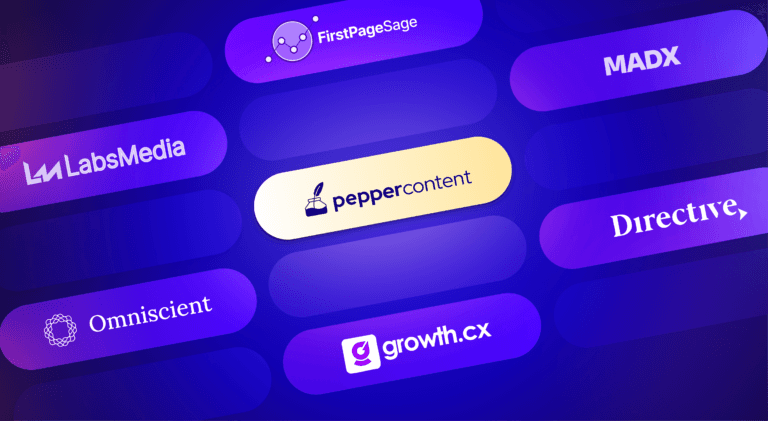
Content Marketing
4 mins read
Top 10 Agencies B2B SaaS Content Marketing for B2B Success

B2C Marketing
5 mins read